The WRMarketplace is created exclusively for AALU members by experts at K+L Gates and the AALU staff. WR Marketplace #19-10 was written by Jim Earle.
The AALU WR Newswire and WR Marketplace are published by the AALU as part of the Essential Wisdom Series, the trusted source of actionable technical and marketplace knowledge for AALU members—the nation’s most advanced life insurance professionals.
Thursday, May 23, 2019 WRM#19-10
TOPIC: The IRS Expands EPCRS Self-Correction Program to Cover Plan Loan Failures and Certain Other Operational and Plan Document Failures
MARKET TREND: In April 2019, in response to practitioner requests, the IRS expanded its Employee Plans Compliance Resolution System (“EPCRS”), providing more opportunities to self-correct plan failures.
SYNOPSIS: To maintain a tax-favored qualified plan status, retirement plans must comply with many Internal Revenue Code (“Code”) requirements, which lead to frequent errors. The IRS’s correction guidance includes a free self-correction program, a voluntary correction program (“VCP”) subject to IRS approval and a user fee, and a correction program for those under IRS audit, which results in a more costly sanction. The 2019 EPCRS update expands the self-correction options for common plan errors, including plan loan errors, as well as certain plan document and operational errors.
TAKEAWAYS: The 2019 EPCRS update makes common plan failures simpler and less costly to correct. Particularly for smaller plans that may have found the new VCP user fee structure prohibitive, the expanded self-correction options mean that more plan errors can be corrected without the time and expense of a VCP submission.
The EPCRS Correction Program
To maintain the tax-favored status of a qualified retirement plan or Code section 403(b) plan, a plan sponsor must comply with complex requirements, which often result in either operational or plan document errors. Operational errors arise when plan administrative practices fail to follow plan terms. Plan document errors occur when a plan includes provisions that do not follow that technical requirements for qualified retirement plans, or when a plan fails to include provisions required to comply with those technical requirements. Either type of error, left uncorrected, can potentially lead to plan disqualification—a tax disaster for both the plan sponsor and participants.
The IRS offers a program to correct these errors: the Employee Plans Compliance Resolution System (“EPCRS”). EPCRS consists of three distinct paths to correction: (1) a free self-correction program that avoids IRS involvement (“SCP”); (2) a voluntary correction program under which the correction is approved in writing by the IRS, for a fee (“VCP”); and (3) an audit correction program for plans under IRS audit (“Audit CAP”). The IRS intends the SCP and VCP programs to encourage plan sponsors to proactively find and fix errors.
Plan sponsors prefer to self-correct plan failures when possible, because unlike VCP or Audit CAP, self-correction under SCP requires no payment to or interaction with the IRS. The VCP, while available for a wider selection of plan failures, is less desirable because it requires payment of a user fee to the IRS, as well as the time and expense of a written IRS submission, which can take months to be approved. And plan sponsors avoid Audit CAP whenever possible; correction under Audit CAP is required only when an uncorrected failure is discovered during an IRS audit of the plan. Audit CAP corrections require payment of a sanction reflective of the type and severity of the error.[1]
2019 Changes to EPCRS
For years, plan sponsors and practitioners have been advocating for expanded self-correction options under EPCRS. These efforts increased in the wake of the IRS’s recent change in the VCP user fee structure, which disproportionately benefits large plans that wish to submit a correction under the VCP.[2] In response to these plan sponsor requests, the IRS issued Rev. Proc. 2019-19 (the “2019 Update”), expanding the self-correction options under EPCRS to “increase compliance and reduce the costs and burdens associated with plan compliance.”[3] As described below, the 2019 Update expands corrections available under the SCP, primarily with respect to plan loan failures, but also for certain operational failures and plan document errors. Plans eligible to correct under the SCP may rely on the expanded SCP beginning April 19, 2019.[4]
1. Plan Loan Errors
Plan loan errors are among the most frequent type of operational error for 401(k) plans. The 2019 Update permits self-correction of various common plan loan errors, including errors related to defaulted loans (i.e., failure to repay a plan loan according to plan terms); failure to obtain spousal consent for a loan; and issuing more loans than what the plan otherwise permits. The 2019 Update also relaxes the tax reporting for plan loan errors unable to be corrected.
- Plan Loan Errors Eligible for Correction under SCP
- Defaulted Loans (Missed Participant Payments): A participant’s plan loan is defaulted when the participant fails to repay the loan according to plan terms (which satisfy Code section 72(p)(2)), usually within a one-calendar-quarter grace period. This error can arise, for example, when a payroll system inadvertently fails to timely collect and forward plan loan repayments, or remits plan loan repayments at a lower rate than required by the loan amortization schedule. So long as the error is caught and fixed before the end of the loan term (usually five years), defaulted loans now may be corrected under the SCP using the same methods previously available only in the course of a VCP submission: correction by a single-sum repayment, re-amortization of the outstanding loan balance, or some combination of the two.[5] Upon completion of the desired correction, the affected participants repay their loans and experience no negative tax consequences.
- More Loans than Permitted: When a plan inadvertently permits a participant to take a plan loan that exceeds the number of loans permitted by the plan,[6] the error now may be corrected by adopting a retroactive plan amendment to make the increased number of loans available, if (1) the amendment satisfies Code section 401(a); (2) the plan, as amended, would have satisfied the qualification requirements of Code sections 401(a) and 72(p) had the amendment been effective when the plan loans were first made available; and (3) plan loans (including plan loans in excess of the number permitted under the terms of the plan) were available to all participants or solely participants who were not highly compensated employees.[7]
- Spousal Consent: If a loan requires spousal consent but consent is not obtained, the plan sponsor now may correct this error by obtaining retroactive approval from the spouse.[8] If the spouse will not provide approval, the error may be corrected only under VCP or Audit CAP.[9]
- Plan Loan Failures Not Eligible for SCPThe SCP remains unavailable to correct loan errors involving loan amounts that (1) exceed the monetary loan limits under the Code section 72(p)(2)(A)—generally, the lesser of $50,000 or one-half of the participant’s accrued benefit; or (2) fail to meet the maximum repayment term requirements of Code section 72(p)(2)(B)—which is five years, except in the case of a home loan—or the level amortization requirements of Code section 72(p)(2)(C). These errors may be corrected only under VCP or Audit CAP.[10] Additionally, the SCP is not available to correct plan loans if the maximum repayment period in Code section 72(p)(2)(B) has expired—for example, if the error is not discovered until more than five years after the loan commenced.[11]
- Tax Reporting of Plan Loan ErrorsBefore the 2019 Update, plan sponsors were required to report a deemed distribution under Code section 72(p)(1) for uncorrected loan failures in the year of the failure.[12] Plan sponsors had to submit a VCP application and request approval from the IRS to report the deemed distribution related to the plan loan failure in the year of correction—a less complicated option for plan sponsors.Now, when a plan loan failure cannot be corrected under one of the other loan correction options described above, the 2019 Update permits plan sponsors to report the deemed distribution for affected participants in the year of correction without requesting approval from the IRS under the VCP.[13]
2. Plan Document Errors
The 2019 Update permits plan sponsors of qualified plans or Code section 403(b) plans to correct certain plan document failures by retroactive amendment using the SCP, including the failure to adopt legally required or interim amendments. Correction under SCP is not available to correct the initial failure to adopt a qualified plan or a written Code section 403(b) plan document or to adopt a discretionary amendment.[14] Self-correcting document failures are not available to SEPs or SIMPLE IRAs.[15]
Plan document failures eligible for self-correction may be corrected by retroactive amendment only if (1) as of the date of correction, the plan is subject to a favorable determination letter or opinion letter and (2) the correction is made within the SCP correction period (generally the last day of the second plan year following the year of the failure).
This new rule will make it simpler for plan sponsors to fix technical plan amendment failures that are caught relatively quickly after the failure. For example, if a plan sponsor should have adopted a required amendment to address a change in qualified plan rules but failed to have the amendment executed by the legal deadline for adoption, the plan sponsor could use this new SCP rule to retroactively adopt the required amendment if caught and fixed within the SCP two-year period.
3. Operational Errors Corrected by Plan Amendment
Some operational failures involve providing participants with larger or better benefits than the plan provisions otherwise describe. Rather than reduce the benefits to comply with plan terms, plan sponsors will often prefer to correct the error by retroactively amending the plan document to provide for the better benefits actually delivered. Before the 2019 Update, this method of correction could be done only through VCP, even if the error was caught quickly.
With the 2019 Update, plans eligible for the SCP may correct these operational failures under SCP, rather than VCP, by plan amendment to retroactively conform the terms of the plan to the plan’s prior operations. To correct under SCP, three conditions must be met: (a) the plan amendment results in an increase in a benefit, right, or feature; (b) the increase in benefit, right, or feature is available to all eligible employees; and (c) providing the increase in benefit, right, or feature is permitted under the Code[16] and satisfies the general EPCRS correction principles[17] as well as all other applicable rules in EPCRS.[18]
4. Failure to Obtain Spousal Consent
Some types of retirement plans, such as defined benefit pension plans, require spousal consent for benefit payment not otherwise made in a qualified joint and survivor annuity. Prior to the 2019 Update, a plan could correct a failure to obtain spousal consent only through VCP. The 2019 Update now allows correction to be made through SCP, generally by having the plan obtain a retroactive spousal consent.
5. New SCP Examples
Some of the SCP requirements and correction approaches can depend on whether the failure is considered “significant” or “insignificant.” The IRS intends to provide additional examples that illustrate whether an operational failure is significant or insignificant on its webpage, “Correcting Plan Errors.”[19] No new examples have been published as of the date of this article.
Final Thoughts
The 2019 Update is the most significant change to EPCRS correction options in years. The changes adopted in the 2019 Update ease the burden of correcting a number of plan errors. Especially for plan loan failures, which are not only common but also time-consuming and expensive to correct using VCP, these changes should further encourage plan sponsors to proactively find and correct these errors.
In addition to the changes announced in the 2019 Update, the IRS noted that it continues to consider comments regarding the recoupment of overpayments (i.e., when a plan overpays a participant). The IRS is seeking and considering comments with the intent of developing guidance on the correction of overpayments under EPCRS.
Notes
[1] Rev. Proc. 2019-19, § 14.
[2] Prior to 2018, user fees were based on number of participants, plan type, error type, and whether the plan was required to file a Form 5500. After Rev. Proc. 2018-4, user fees are based almost entirely on the amount of plan assets, with a floor of $1,500 for plans with assets of $500,000 or less, and a ceiling of $3,500 for a plan with assets over $10 million.
[3] Rev. Proc. 2019-19, § 2.02(1).
[4] Id. at §§ 2.02(1), 16.
[5] Id. at §§ 2.02(4)(a), 6.07(3)(d). Plan loan errors can also implicate potential prohibited transaction or fiduciary duty failures under the Employee Retirement Income Security Act of 1974 (“ERISA”), which are enforced by the Department of Labor (“DOL”). The DOL has advised that it will not issue a “no action letter” under the DOL’s Voluntary Fiduciary Correction Program unless the loan error is corrected under VCP. Therefore, if the magnitude of the failure is such that a plan sponsor has concerns about DOL enforcement actions, correction using VCP would offer more certainty. Id. at § 2.02(4)(a).
[6] EPCRS already provided for self-correction when a participant is permitted to take a loan under a plan that does permit plan loans.
[7] See id. at §§ 2.02(4)(e) (noting the expansion of SCP to correct these plan loan failures by plan amendment), 6.07(5) (providing for correction of these failures in accordance with the correction method set forth in § 2.07(3) of Appendix B).
[8] Id. at §§ 2.02(4)(d), 6.07(4)(a).
[9] Rev. Proc. 2019-19, §§ 2.02(4)(d), 6.07(4)(a).
[10] Id.
[11] Id. at § 6.07(3)(a).
[12] Id. at § 2.02(4)(b) (“Rev. Proc. 2018-52 permitted, as part of VCP and Audit CAP, a Plan Sponsor to report the deemed distribution on Form 1099-R in the year of correction (instead of the year of the failure), but only if the Plan Sponsor specifically requested that relief.”).
[13] Id. at § 6.07(2); see also id. at § 2.02(4)(b) (“Section 6.07(2) of this revenue procedure eliminates the requirement that the reporting relief must be requested in order to report the deemed distribution in the year of correction.”).
[14] Rev. Proc. 2019-19, §§ 2.02(2), 4.01(1)(b); see also id. at § 5.01(2)(a)(i).
[15] Id. at § 2.02(2). SEPs and SIMPLE IRAs may only use SCP to correction insignificant operational failures. Id. at § 4.01(1)(“SEPs and SIMPLE IRA Plans are eligible for SCP only with respect to insignificant Operational Failures.”). A Plan document failure is considered a significant failure; thus, SCP correction for this failure is not available to SEPs or SIMPLE IRAs. Id. at §§ 2.02(2) (“Plan Document Failures under SCP are always treated as significant failures and must be corrected in accordance with section 9.”), 4.01(1)(b) (“All Plan Document Failures that are eligible to be corrected under SCP are treated as significant.”).
[16] Including “the requirements of IRC §§ 401(a)(4), 410(b), 411(d)(6), and 403(b)(12), as applicable.” Id. at § 4.05(2)(a). These requirements include requirements related to nondiscrimination in amount of benefits and coverage testing.
[17] These principles involve providing a correction that (1) restores benefits; (2) is reasonable and appropriate; (3) is consistent with other correction methods used; and (4) adheres to principles regarding corrective allocations and distributions. See id. at § 6.02.
[18] Rev. Proc. 2019-19, § 4.05(2)(a).
[19] IRS, Correcting Plan Errors, https://www.irs.gov/retirement-plans/correcting-plan-errors (last reviewed or updated April 22, 2019).
.






